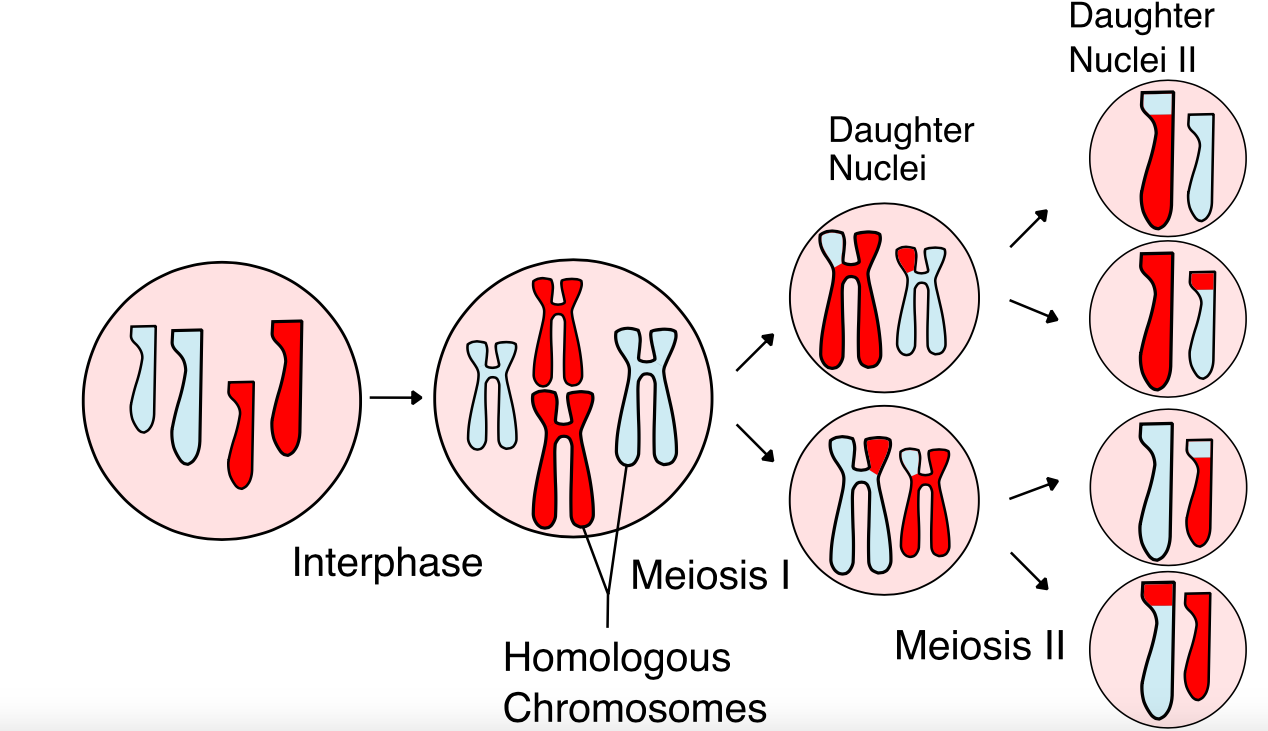Asexual and Sexual Reproduction
Reproduction
Meiosis leads to non-identical cells being formed while mitosis leads to identical cells being formed. Sexual reproduction involves the joining (fusion) of male and female gametes:
- Sperm and egg cells in animals
- Pollen and egg cells in owering plants
In sexual reproduction there is mixing of genetic information which leads to variety in the offspring. The formation of gametes involves meiosis.
Asexual reproduction involves only one parent and no fusion of gametes. There is no mixing of genetic information. This leads to genetically identical offspring (clones). Only mitosis is involved.
Meiosis
Meiosis is a type of cell division that is extremely important, as it is needed to produce male and female sex cells (gametes). The male gamete is the sperm, and the female gamete is the egg. Most cells in the body will contain 46 chromosomes that are arranged in 23 pairs. Each pair will receive one chromosome from each parent. During fertilisation, the gametes will fuse in order to form a zygote. The zygote will then contain 23 pairs of chromosomes as they receive 23 chromosomes from the sperm cell, and 23 chromosomes from the egg cell. During meiosis, the daughter cells that are produced will have half the number of chromosomes from their parent cell.
The red and white strands are the chromosomes. You can see that chromosomes from the daughter cells are different from the parent cell, as it has copied different parts of the parent cell. The daughter cells only have half the number of chromosomes as the parent cell.
Cells in reproductive organs divide by meiosis to form gametes. All gametes are genetically different from each other. Gametes join at fertilisation to restore the normal number of chromosomes. The new cell divides by mitosis. The number of cells increases. As the embryo develops cells differentiate.
Advantages and Disadvantages
Some organisms reproduce by both methods depending on the circumstances. Malarial parasites reproduce asexually in the human host, but sexually in the mosquito. Many fungi reproduce asexually by spores but also reproduce sexually to give variation. Many plants produce seeds sexually, but also reproduce asexually by runners such as strawberry plants, or bulb division such as daffodils. Knowledge of reproduction in organisms is restricted to those mentioned.
Advantages of sexual reproduction:
- Produces variation in the offspring
- If the environment changes variation gives a survival advantage by natural selection
- Natural selection can be speeded up by humans in selective breeding to increase food production.
Disadvantages of sexual reproduction:
- Requires two parents
- Requires time and energy
- Prevents favourable genes from passing to the next generation
- Produces fewer offsprings than asexual reproduction
Advantages of asexual reproduction:
- Only one parent needed
- More time and energy ef cient as do not need to find a mate
- Faster than sexual reproduction
- Many identical offspring can be produced when conditions are favourable.
Disadvantages of asexual reproduction:
- No diversity
- Prone to extinction (same trait = same weakness)
- Cannot adapt to environmental changes
- How many chromosomes does a body cell have?
- 46
- Which cells reproduce via meiosis?
- Your answer should include: Sex / Cells
- When does the female and male gamete meet?
- Fertilisation
